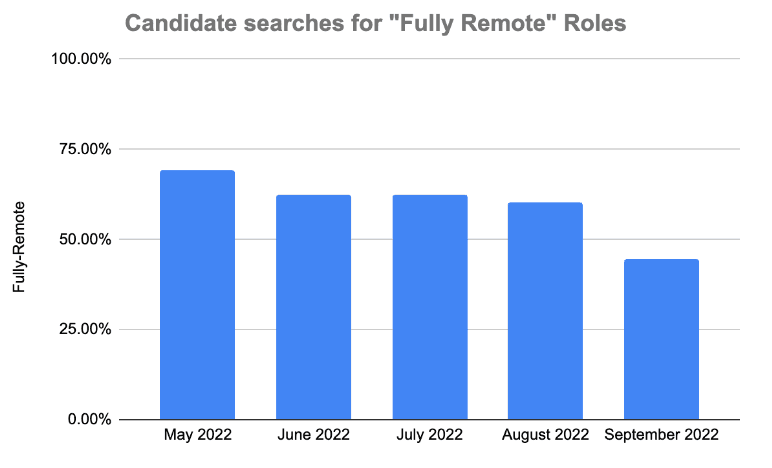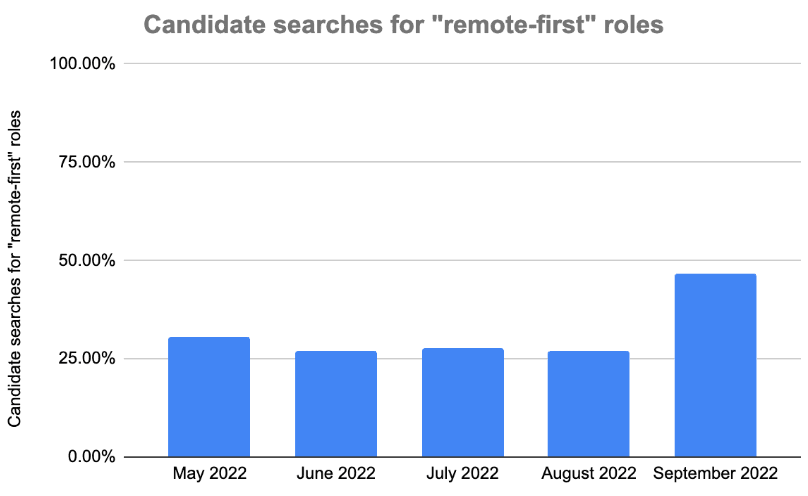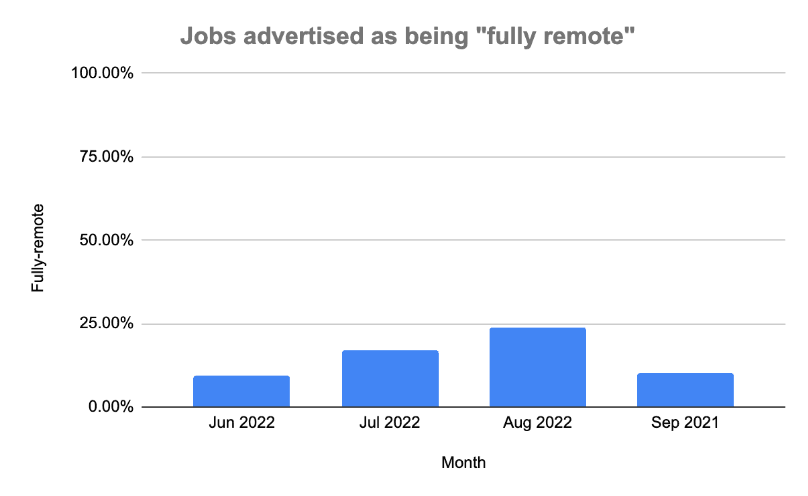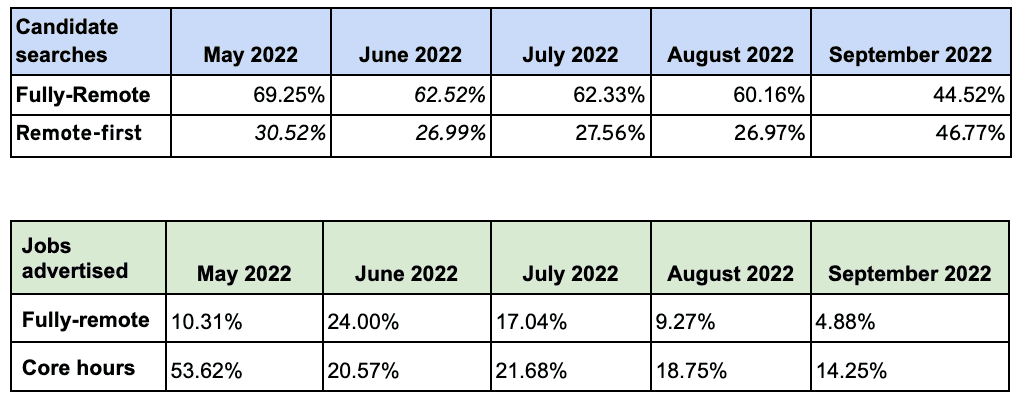Flexible Working Index September: What Job Hunters Are Looking For
3rd Oct 2022

September’s Flexible Working Index has revealed a range of key trends, including that fewer employees are looking for fully remote work, and fewer employers are offering it. September’s Index analysed a sample size of 43,569 searches by job hunters and over 1,290 job adverts.
Demand for ‘fully remote’ see a big decline amongst job seekers
The number of candidates seeking out roles which would allow them to work fully remotely dropped dramatically in September. During August, 60% of all searches were for “fully remote” roles. However, this fell to just 44% in September - a decline of 26%.

Instead, more people are searching for “remote first” roles that allow them to combine working from home with some time in the office. Searches for remote first jobs rose by a huge 74% between August and September, up from 27% to 47% of all searches.

As summer recedes there appears to be less demand to have full flexibility over the working location. As winter approaches, employees may well be prioritising having the choice between working from home and accessing a heated office.
Employers offering fully remote packages declines
Employers also reflect this trend, with fewer companies advertising roles that can be carried out remotely. The number of jobs being advertised as “fully remote” dropped from 24% of all listings in August to just 10% in September - a decline of 58%.

Instead, employers seem increasingly keen to have their staff in the office more and work more ‘collegiate’ hours.
Jobs requiring staff members to come into the office for 3-4 days per week jumped by 67% in September (up from 40% of jobs posted to 67%).
And more companies are offering jobs with “core hours”; whereby staff must work during certain times (e.g. 11am-3pm) but are given flexibility outside of that. Job adverts for roles with core hours rose from 20% of all postings in August to 53% in September - a rise of 165%.
Molly Johnson-Jones, CEO and co-founder of Flexa Careers, comments:
“September’s data clearly shows preferences moving away from fully remote roles and a rise in demand for jobs that involve some time in the office. This is clear from both employee and employer data and likely reflects a range of macro factors.
“These include the end of summer and perhaps less of a pull to work from abroad or different locations, and the onset of what looks like to be a tough winter for many. Over the coming months, having access to a heated office with amenities will be prized by many feeling the cost of living sting.
What employers mustn’t forget, though, is that people still value choice and freedom in their working environments. The increased demand for remote-first further illustrates this, as remote-first is the working environment that offers both the freedom of working remotely, but also the choice of an office.
This end of summer transition could be something we see becoming an annual trend, and reflects the ongoing need for employers to remain flexible, nimble and offer choice when it comes to talent attraction. Needs and priorities will continue to shift; companies should be prepared to respond to that.”
Full Flexible Working Data
